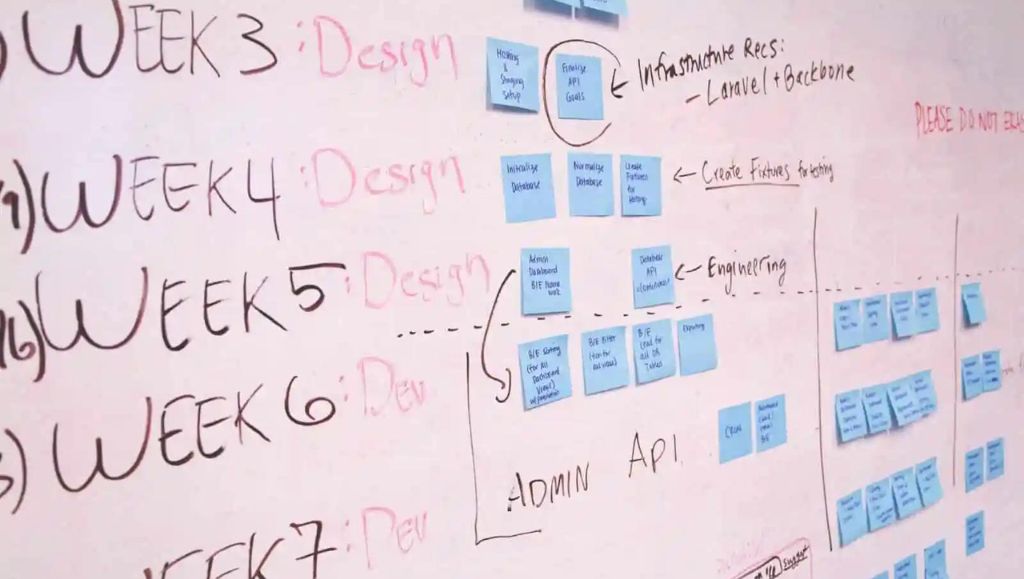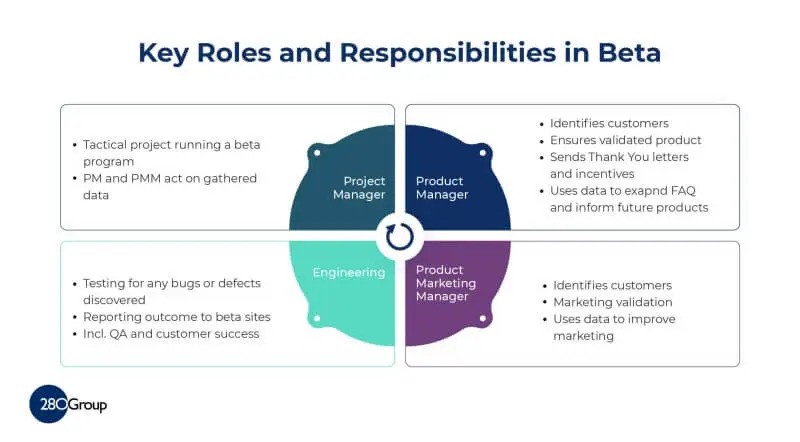
It’s a question we hear all the time… What is a Beta Program? So we created this guide to help individuals, teams and companies answer that question.
A Beta Program is a set of tests designed to determine if a completed product fulfills the value proposition that it was designed to deliver. A Beta Program should be executed after a product has been built but before it is launched. A successful Beta Program requires the work of the Product Manager, Product Marketing Manager, Project Manager/Administrator and an Engineering/support person.
What is a Beta Program?
Once your product is developed, you’ll want to have a few customers test it to make sure that you delivered what you thought customers asked for. In the 280 Group Optimal Product Process, this is the Qualify phase. So why call this a beta program? Some products are released sequentially. Alpha products had the features, but lacked stability. Beta products worked pretty well. And then the Golden Master was the final shippable product. Using the term beta program stuck because that’s when the product was good enough for customers to test it.
One thing is for sure: you learn a lot from running a beta program. And another? It takes time at a crucial stage in product development when you least have spare cycles.
Actually, you’re not on your own in running a Beta program. Typically the team consists of the Product Manager, Product Marketing Manager, Project Manager/Administrator and an Engineering/support person. Check out what the different team members are responsible for.

Plan on 6 to 12 weeks from when you start planning the beta program, and make sure you have an employee or contractor dedicated at least half-time to running the program. Planning, recruiting customers, gathering feedback and suggestions, running an exit survey, and tallying the results to determine whether the product is ready to be released are all time-consuming yet critical activities that need to be covered.
- Set goals, write plan, and sign off – 1 week
- Recruit and receive applications – 3 weeks
- Select, notify, and send agreement – 1 week
- Run program – 3–6 weeks
- Conduct exit survey, tally results, and write final report – 1 week
What about beta programs with products developed under Agile?
Something to consider if you’re working with Agile development teams: You may be releasing new versions of the product at the end of each sprint. This scenario generally occurs with small apps or web-based software where a small subset can use the product in real-life circumstances and then it can be released to a wider audience. The great thing about these types of products is that you can easily roll them back to the prior version if a significant problem crops up.
If you have a mission-critical application or one that you can’t roll back easily, you may want to combine sprints into a master release every six months or a year.
Dodging Typical Beta Program Mistakes
The most common mistakes made in the beta program are as follows:
- Not building enough time into the schedule to do adequate beta testing with real-world customers. Development almost always takes far longer than expected, and you’re anxious to release the product on time. As a result, the time set aside for beta testing is often reduced dramatically at the very end, resulting in an ineffective (sometimes nonexistent) beta program.
- Choosing beta testing customers that don’t represent the actual customers and personas. Friends and family often beta test. Though these people can provide some good feedback, don’t assume that they’re representative of how your actual customers will use the product or of the kind of environment customers will use it in on a day-to-day basis.
- Running a beta program without predefined goals and metrics. If you don’t establish what the goals and metrics are prior to running the program, you won’t be able to determine whether the product is actually ready to release. Having some concrete metrics in place can help make your decision to cut corners at the very end of development a far easier decision.
- Underestimating how difficult recruiting participants for the program will be. Many times, companies incorrectly believe finding customers who are willing to spend time beta testing the product will be easy. In real life, finding people who are dedicated, and willing to spend the time and effort required to provide useful feedback is often far more difficult.
Beta Program Plan Template
Completing a beta program plan template is a short, sweet and somehow satisfying activity. You’re putting the final touches on a product and presenting it out to selected customers. The beta program plan is usually no more than 2 or 3 pages depending on how you space the data. Here are the key areas to cover:
- Goals and Objectives – What are you trying to accomplish? One goal should be that you’ll survey the beta testers at the end of the program and find that a certain percentage of them (for example, 90 percent) indicate they believe the product is ready to ship.
- Recruiting customers – Ask sales and support for friendly customers who like your product to participate.
- Incentives to Participate – Usually the “Help us improve the product” angle works to some degree. You may also want to offer free or reduced pricing or upgrades. Another option is to have a contest to keep users motivated.
- Criteria for Starting the Program – Make sure all components of the product are solid before deploying anything. Check and double-check the installers, prepare a FAQ document so that participants won’t have to contact you to get answers, and include documentation and help functions if at all possible.
- Schedule and Deliverables – What needs to be delivered to whom – and by when?
- Support – Who is allocated to support customers through the beta program?
- Budget – How much will this cost? Beta programs are usually not very expensive to run.
- Success Criteria – When you’re ready to end the beta program, have the participants complete a short exit survey. Ask the participants how much they used the product, what their overall impressions are, whether they believe the product is ready to ship, and what can be improved.
- Other – Risk Analysis, Assumptions, Open Issues, Document Approval and Core team members.
Final Report
Take the results of the survey and deliver a final report to your team. This account should include a short testing summary, bug trend information, information on whether you met the original agreed-upon goals, and a summary of customer opinions and feedback. Deliver this report to the team prior to making the decision to ship the software.


